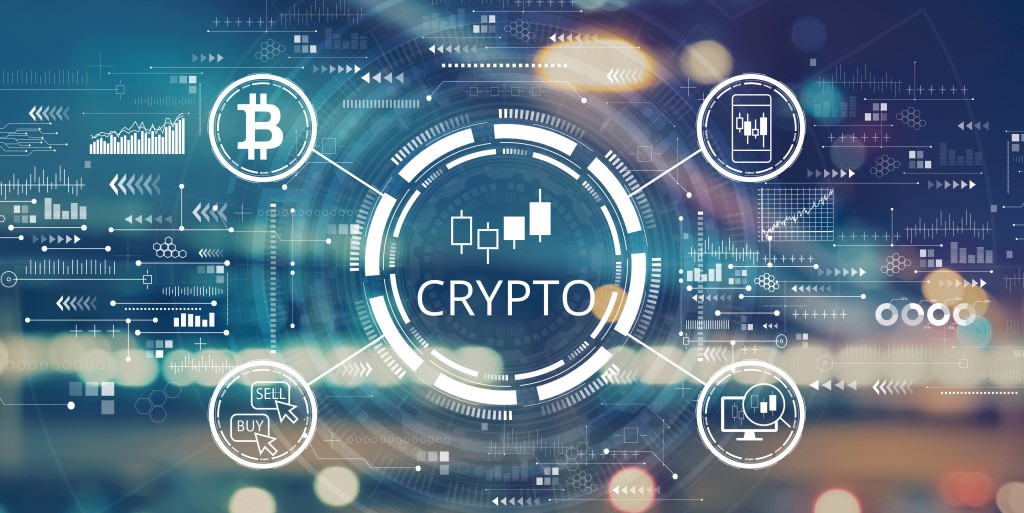Funding science through blockchain technology and cryptocurrencies
25 November 2022 | By: Matt Abbott | 2 min read
Usually, universities are funded through centralised organisations, such as governments and banks. But recently, in what is believed to be a UK first, we secured funding through cryptocurrency.
A first for UK universities?
In what is believed to be a UK first, we have secured funding through cryptocurrency, for a project led by Dr Viktor Korolchuk.
The project aims to identify novel bioactive autophagy inducers. Autophagy literally means “self-eating”, and is a process where damaged components in cells are collected together and removed by the body.
Activation of autophagy is considered a promising therapeutic approach to combat ageing and age-related diseases. The project is valued at $285,000 is funded by VitaDAO.
The process was incredibly smooth. From proposal submission to contract execution, it took around four weeks. The parties were very open with each other and were able to quickly agree a position that benefits everyone involved.
In this blog Matt Abbott, Business Development Manager in our Faculty of Medical Sciences, answers commonly asked questions about funding through cryptocurrency and shares insight from our experience.
How do typical funding routes work?
Traditional funding mechanisms often rely on centralised organisations, such as governments, charities, and corporate funders. These usually require lengthy and time-consuming application processes.
Overall funding budgets for specific areas are set centrally. Often, this quickly changes depending on various external economic, political, and technological factors.
How did the new cryptocurrency process work?
Once submitted, the proposal was reviewed and evaluated by an expert panel who commented on:
- innovative value and impact
- feasibility and data
- relevance to longevity
- team
- market
- potential for intellectual property
Individuals engaged in the platform then voted on the proposal, before proceeding to contract.
What is a Decentralised Autonomous Organisation?
Broadly speaking, Decentralised Autonomous Organisations (DAOs) are groups of people in pursuit of a common goal. With no central governing body, each member of the DAO attempts to act in the best interest of the organisation.
DAOs have become more popular due to cryptocurrency and blockchain technology, and are used to make decisions in a bottom-up management approach.
Rules about how a DAO operates are set by its community and then codified into the organisation, often through computer programs that provide transparency and resilience to central influence, for example governments and senior management structures.
VitaDAO is a decentralised autonomous organisation.
DAOs are relatively new and often raise negative sentiment through their association with cryptocurrencies. However, as the space becomes more regulated and blockchains move to environmentally friendly ‘proof of stake’ validation, they could become an additional funding stream that complement traditional routes.
What is VitaDAO?
VitaDAO is a DAO collective for community-governed and decentralized drug development. Its core mission is the acceleration of research and development in the longevity space and the extension of human life and healthspan.
VitaDAO believes the future of biopharma is transparent, collaborative, and open source. It is an open cooperative that anyone can join, with the goal to acquire, support, and finance new therapeutics and research data in the longevity space. The VitaDAO collective co-develops IP with researchers, growing a portfolio of assets represented as IP-NFTs and other tokens.
Its community votes on grant proposals, attends seminars, and sets the DAO governance rules around, for example, future investment. Cryptocurrency enables community interaction through the VITA token.
What is a blockchain?
Blockchain is a decentralised ledger of transactions and the basis for cryptocurrencies, the most well-known being Bitcoin and Ethereum.
What is a VITA token?
VitaDAO tokens are minted using a blockchain and then sold, with token owners being able to interact with that project, often referred to as Web3.
Holders of VITA can interact with the VitaDAO ecosystem by voting on proposals and governance issues, their vote being proportionate to the amount of VITA they hold.
Where does funding come in?
VitaDAO was initially funded through sale of 10% of tokens, generating around £3.8m in revenue to fund research projects.
Additional revenue is generated through further token sales and the commercialisation of project outputs. Researchers submit a proposal to the VitaDAO platform which is assessed by an expert panel and then voted on by the community.
What does our success with this type of funding mean for future contracts?
Our experience with VitaDAO has been very positive, and it is particularly encouraging to see a community interacting and learning about the science. The process was progressive, quick, and efficient.
We plan to keep an open mind and experiment further with this innovative new type of funding.
Learn more about crypto-funded research
Laura DeFrancesco and Ariel Klevecz have written an excellent article in Nature Biotechnology about this emerging funding source:
- DeFrancesco, L., Klevecz, A. Decentralized investor communities gain traction in biotech. Nat Biotechnol 40, 1310–1315 (2022).
You might also be interested in...
- Explore how we're helping people to live longer, healthier lives
- Our ageing and geroscience research
- How we're improving therapy options, outcomes, and quality of life for people with a rare disease
